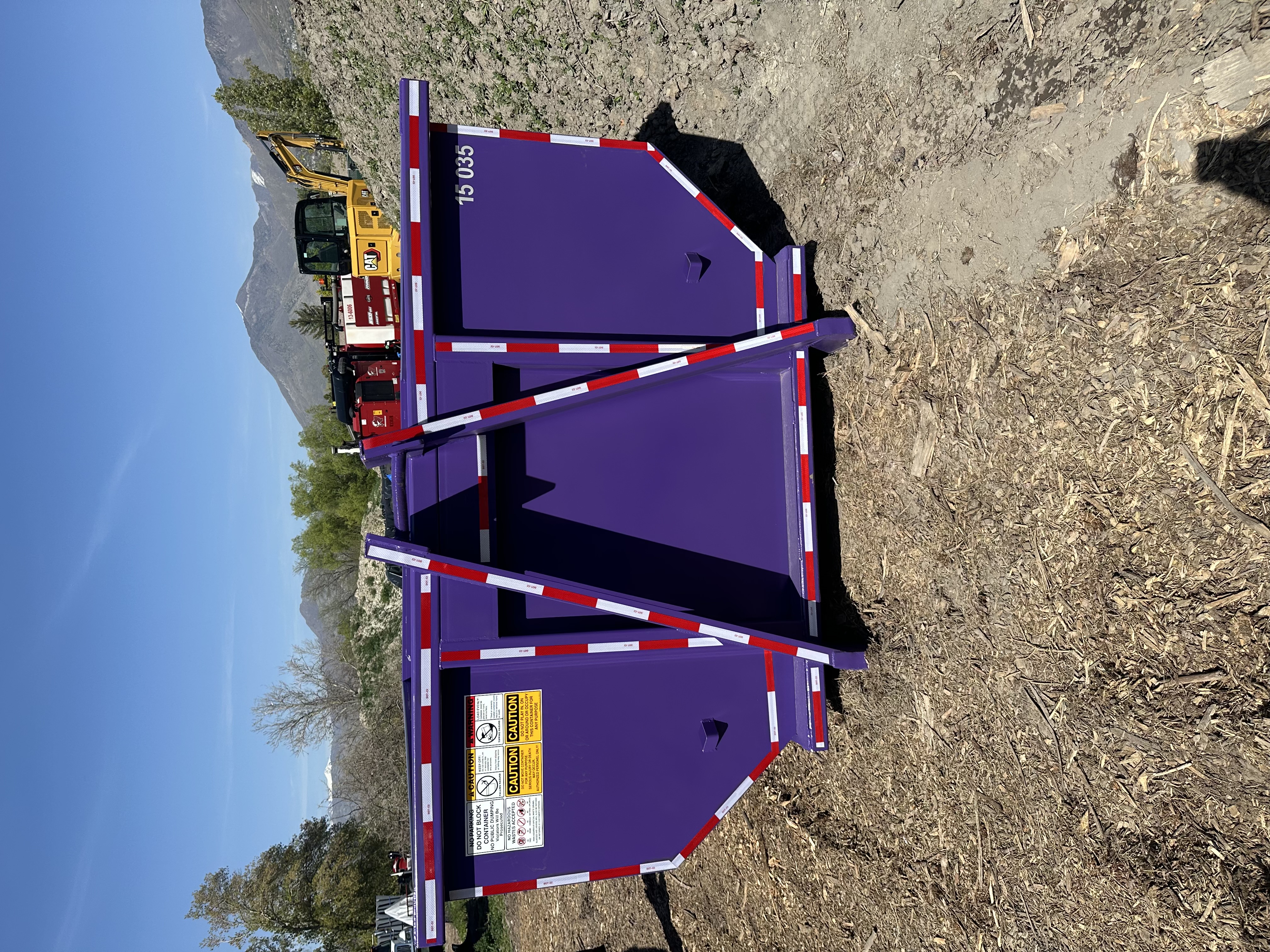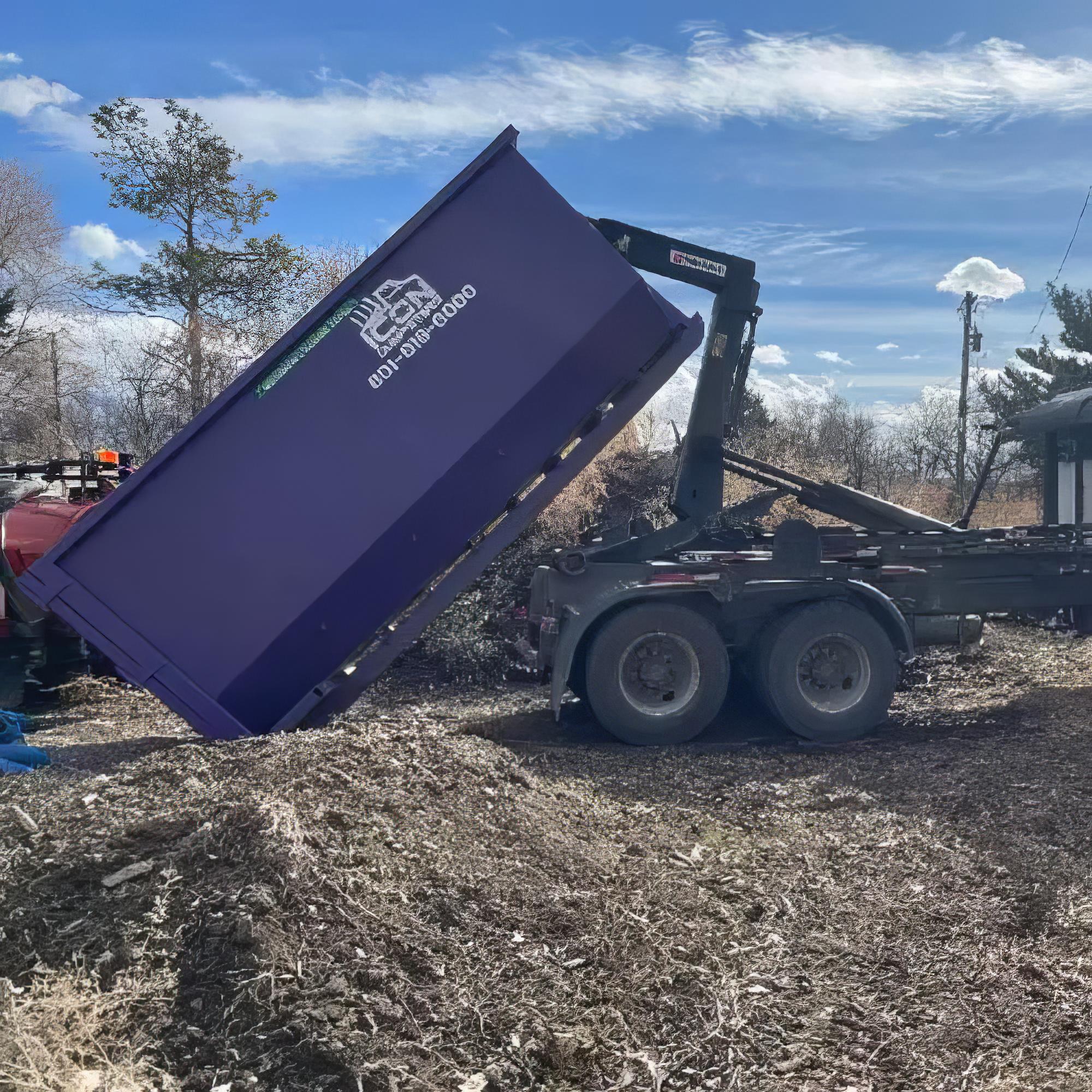Complete Guide to Dumpster Rental: Everything You Need to Know in 2025
A comprehensive guide to choosing the right dumpster size, understanding rental costs, and maximizing efficiency for your construction or cleanup project. Learn the latest industry standards and best practices for waste management.

Introduction to Dumpster Rental
Dumpster rental is an essential service for construction projects, home renovations, and large-scale cleanups. Whether you're a contractor, homeowner, or business owner, understanding how to choose the right dumpster size and service can save you time, money, and headaches.

From small residential projects to large commercial construction sites, the right dumpster rental solution can make all the difference in project efficiency and cost management.
Understanding Dumpster Sizes
Choosing the right dumpster size is crucial for your project's success. Too small, and you'll need multiple pickups. Too large, and you're paying for unused capacity.

Small Dumpsters (10-15 yards)
- Perfect for small home renovations
- Kitchen or bathroom remodels
- Garage cleanouts

Medium Dumpsters (20-30 yards)
- Large home renovations
- Roofing projects
- Deck or patio construction

Large Dumpsters (40+ yards)
For major construction projects, demolition work, or large-scale cleanouts, 40-yard dumpsters provide the capacity you need to keep your project moving forward efficiently.
- Major home renovations and additions
- Commercial construction projects
- Demolition and site clearing
Cost Factors and Pricing in 2025
Dumpster rental costs vary significantly based on several factors. Understanding these can help you budget effectively and avoid unexpected expenses that could impact your project timeline.
Base Rental Costs by Size

Additional Costs to Consider
- •Delivery fees: $50 - $150 depending on distance and accessibility
- •Pickup fees: $50 - $100 for removal and disposal
- •Overweight charges: $50 - $100 per ton over the specified limit
- •Extended rental: $10 - $25 per additional day beyond the included period
- •Permit fees: $25 - $100 (varies by municipality and project type)
Cost-Saving Tip
Many companies offer package deals for longer rental periods. If your project will take 2-3 weeks, ask about weekly rates instead of daily rates to save money.
Permits and Regulations
In 2025, many municipalities require permits for dumpster placement, especially on public property or city streets. Understanding local regulations is essential to avoid fines and project delays that could impact your timeline and budget.
When You Need a Permit
- •Dumpster placed on public property or city streets
- •Dumpster blocking traffic, sidewalks, or bike lanes
- •Extended rental periods (usually over 30 days)
- •Commercial projects in residential areas
- •Projects requiring street closure or traffic control
How to Apply for Permits
- 1Contact your local building department or public works office
- 2Provide project details and dumpster specifications
- 3Pay applicable fees (varies by location and project scope)
- 4Display permit on or near the dumpster as required
Environmental Considerations and Waste Management
Modern dumpster rental emphasizes environmental responsibility. Understanding proper waste sorting and disposal methods can reduce costs and environmental impact while ensuring compliance with local regulations.
✅ Recyclable Materials
- Cardboard and paper products
- Metal (aluminum, steel, copper)
- Plastic containers and packaging
- Glass bottles and jars
- Wood and lumber (untreated)
- Concrete and masonry (crushed for aggregate)
❌ Hazardous Materials (Never Put in Dumpsters)
- Paint and chemical solvents
- Batteries and electronics
- Medical waste and pharmaceuticals
- Asbestos-containing materials
- Oil and automotive fluids
- Propane tanks and compressed gas
Environmental Impact
Proper waste sorting can divert up to 70% of construction waste from landfills. Many materials can be recycled into new products, reducing the need for virgin materials and lowering your project's environmental footprint.
Tips for Maximizing Dumpster Efficiency
Getting the most value from your dumpster rental requires smart planning and efficient loading. These proven strategies will help you optimize space usage and reduce costs.
Smart Loading Strategies
- •Break down large items: Disassemble furniture and appliances to maximize space
- •Layer materials: Place heavy items at the bottom for stability
- •Fill gaps: Use smaller debris to fill spaces between large items
- •Distribute weight: Keep heavy materials evenly distributed for safe transport
Space-Saving Techniques
- •Compact materials before loading (crush boxes, break down lumber)
- •Use the full height of the dumpster efficiently
- •Remove packaging and unnecessary materials before loading
- •Consider multiple smaller dumpsters for better organization and access
Choosing the Right Dumpster Rental Company
Not all dumpster rental companies are created equal. Selecting the right provider can make the difference between a smooth project and a logistical nightmare. Here's what to look for when choosing your dumpster rental partner.
Key Factors to Consider
- •Experience: Companies with years in business and proven track records
- •Equipment quality: Well-maintained, clean dumpsters and reliable delivery trucks
- •Service area: Coverage in your specific location with reasonable delivery times
- •Customer service: Responsive and helpful staff available when you need them
- •Pricing transparency: Clear, upfront pricing with no hidden fees or surprises
Essential Questions to Ask
- •What's included in the rental price? (delivery, pickup, disposal)
- •Are there any additional fees I should be aware of?
- •What's the delivery and pickup process like?
- •What happens if I exceed the weight limit?
- •Do you offer emergency services or same-day delivery?
Safety Considerations
Dumpster safety is crucial for protecting workers, property, and the public. Following safety guidelines prevents accidents and liability issues that could derail your project.
Placement Safety
- Place on level, stable ground away from slopes
- Ensure adequate clearance for delivery trucks (at least 20 feet)
- Avoid placing near utilities, structures, or property lines
- Consider weather conditions and drainage patterns
- Mark the placement area clearly for workers
Loading Safety
- Never exceed the specified weight limits
- Don't climb into the dumpster to compact materials
- Use proper lifting techniques for heavy items
- Wear appropriate safety gear (gloves, safety glasses, steel-toe boots)
- Keep the area around the dumpster clear and well-lit
Safety Warning
Overloading a dumpster can cause structural damage and create dangerous conditions during transport. Always respect weight limits and consult with your rental company if you're unsure about capacity.
Conclusion
Successful dumpster rental in 2025 requires careful planning, understanding of regulations, and choosing the right partner. By following this comprehensive guide, you'll be equipped to make informed decisions that save time, money, and stress on your next project.
Remember, the team at Icon Dumpsters is here to help with all your dumpster rental needs. We provide expert advice, competitive pricing, and reliable service throughout Utah. Contact us today to discuss your project requirements and get a customized solution.
Key Takeaways
- • Choose the right dumpster size based on your project scope and timeline
- • Understand all costs involved, including permits and additional fees
- • Implement proper waste sorting to maximize recycling and reduce costs
- • Prioritize safety in placement and loading procedures
- • Select a reputable company with transparent pricing and good customer service
Ready to Rent a Dumpster?
Get a free quote for your project. Our team will help you choose the right size and provide transparent pricing with no hidden fees.